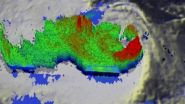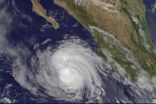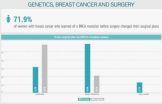(Press-News.org) NASA scientists have created a new recipe that captures key flavors of the brownish-orange atmosphere around Saturn's largest moon, Titan.
The recipe is used for lab experiments designed to simulate Titan's chemistry. With this approach, the team was able to classify a previously unidentified material discovered by NASA's Cassini spacecraft in the moon's smoggy haze.
"Now we can say that this material has a strong aromatic character, which helps us understand more about the complex mixture of molecules that makes up Titan's haze," said Melissa Trainer, a planetary scientist at NASA's Goddard Space Flight Center in Greenbelt, Maryland.
The material had been detected earlier in data gathered by Cassini's Composite Infrared Spectrometer, an instrument that makes observations at wavelengths in the far infrared region, beyond red light. The spectral signature of the material suggested it was made up of a mixture of molecules.
To investigate that mixture, the researchers turned to the tried-and-true approach of combining gases in a chamber and letting them react. The idea is that if the experiment starts with the right gases and under the right conditions, the reactions in the lab should yield the same products found in Titan's smoggy atmosphere. The process is like being given a slice of cake and trying to figure out the recipe by tasting it. If you can make a cake that tastes like the original slice, then you chose the right ingredients.
The challenge is that the possibilities are almost limitless in this case. Titan's dirty orange color comes from a mixture of hydrocarbons (molecules that contain hydrogen and carbon) and nitrogen-carrying chemicals called nitriles. The family of hydrocarbons already has hundreds of thousands of members, identified from plants and fossil fuels on Earth, and more could exist.
The logical starting point was to begin with the two gases most plentiful in Titan's atmosphere: nitrogen and methane. But these experiments never produced a mixture with a spectral signature to match to the one seen by Cassini; neither have similar experiments conducted by other groups.
Promising results finally came when the researchers added a third gas, essentially tweaking the flavors in the recipe for the first time. The team began with benzene, which has been identified in Titan's atmosphere, followed by a series of closely related chemicals that are likely to be present there. All of these gases belong to the subfamily of hydrocarbons known as aromatics.
The outcome was best results were obtained when the scientists chose an aromatic that contained nitrogen. When team members analyzed those lab products, they detected spectral features that matched up well with the distinctive signature that had been extracted from the Titan data by Carrie Anderson, a Cassini participating scientist at Goddard and a co-author on this study.
"This is the closest anyone has come, to our knowledge, to recreating with lab experiments this particular feature seen in the Cassini data," said Joshua Sebree, the lead author of the study, available online in Icarus. Sebree is a former postdoctoral fellow at Goddard who is now an assistant professor at the University of Northern Iowa in Cedar Falls.
Now that the basic recipe has been demonstrated, future work will concentrate on tweaking the experimental conditions to perfect it.
"Titan's chemical makeup is veritable zoo of complex molecules," said Scott Edgington, Cassini Deputy Project Scientist at NASA's Jet Propulsion Laboratory in Pasadena, California. "With the combination of laboratory experiments and Cassini data, we gain an understanding of just how complex and wondrous this Earth-like moon really is."
INFORMATION:
The laboratory experiments were funded by NASA's Planetary Atmospheres program. The Cassini-Huygens mission is a cooperative project of NASA, the European Space Agency and the Italian Space Agency. NASA's Jet Propulsion Laboratory, a division of the California Institute of Technology, Pasadena, manages the mission for NASA's Science Mission Directorate in Washington. Goddard built and manages the Composite Infrared Spectrometer.
NASA experiments recreate aromatic flavors of Titan
2014-06-13
ELSE PRESS RELEASES FROM THIS DATE:
'Exquisitely engineered' human vision featured in Optical Engineering
2014-06-13
BELLINGHAM, Washington, USA — A new special section on Human Vision in the current issue of Optical Engineering showcases optics and optical engineering research into new techniques and approaches for the study of human vision and the design of novel imaging systems. Put into practice, these new approaches enable applications such as earlier diagnosis of disease, improved treatment monitoring, and more accurate guidance for treatment and surgery. The journal is published by SPIE, the international society for optics and photonics.
The special section includes 11 papers ...
NASA sees Tropical Storm Nanauk's soaking swan song
2014-06-13
VIDEO:
This TRMM satellite flyby animation shows that Tropical Storm Nanauk contained powerful towering thunderstorms that were reaching heights of up to 16.8 km (10.4 miles) on June 11, 2014....
Click here for more information.
Tropical Storm Nanauk was dissipating in the Arabian Sea on Friday, June 13 as it ran into increasing vertical wind shear, dry air moving into the tropical cyclone and cooler sea surface temperatures. NASA's TRMM satellite observed the soaking rains the ...
NASA sees Hurricane Cristina making a reverse in strength
2014-06-13
Hurricane Cristina intensified rapidly on June 12 and infrared satellite data showed cloud top temperatures became extremely cold as thunderstorms towered to the top of the troposphere. One day later, Cristina was weakening quickly and infrared data showed cloud top temperatures were warming as the cloud tops dropped.
Infrared data basically reads a cloud top's temperature. When NASA's Aqua satellite passed over Hurricane Cristina early on June 12, cloud top temperatures exceeded -80C (-112F). Today, June 13, infrared data showed cloud top temperatures had warmed to near ...
Nurses play critical role in responding to global resurgence of pertussis
2014-06-13
(June 13, 2014)- Concerted effort is needed to reverse the ongoing rise in pertussis cases and deaths, especially among children and young people, according to the article by Emily Peake, APRN, MSN, FNP-C, CLC, and Lisa K. McGuire, MSN, MBA-HCM, RN. "This effort begins with nurses and nurse practitioners and other primary care providers who educate patients and the public," they write. "The battle of pertussis is winnable through education, awareness, and vaccination."
In US and Abroad, Rising Rates of Pertussis Infection and Death
Caused by infection with Bordetella ...
UH research focuses on how food marketing creates a false sense of health
2014-06-13
Health-related buzzwords, such as "antioxidant," "gluten-free" and "whole grain," lull consumers into thinking packaged food products labeled with those words are healthier than they actually are, according to a new research study conducted by scholars at the University of Houston (UH).
That "false sense of health," as well as a failure to understand the information presented in nutrition facts panels on packaged food, may be contributing to the obesity epidemic in the United States, said Temple Northup, an assistant professor at the Jack J. Valenti School of Communication ...
Who's using your data?
2014-06-13
By now, most people feel comfortable conducting financial transactions on the Web. The cryptographic schemes that protect online banking and credit card purchases have proven their reliability over decades.
As more of our data moves online, a more pressing concern may be its inadvertent misuse by people authorized to access it. Every month seems to bring another story of private information accidentally leaked by governmental agencies or vendors of digital products or services.
At the same time, tighter restrictions on access could undermine the whole point of sharing ...
Moffitt study shows utilizing genetic health care professional reduces unnecessary testing
2014-06-13
TAMPA, Fla. (June 13, 2014) – A new Moffitt Cancer Center study published Thursday in Genetics in Medicine shows that counseling from a genetic health care provider before genetic testing educates patients and may help reduce unnecessary procedures.
Up to 10 percent of cancers are inherited, meaning a person was born with an abnormal gene that increases their risk for cancer. "Pre-test genetic counseling in which a health care provider takes a thorough family history and discusses the potential risks and benefits of genetic testing is standard of care as recommended ...
BRCA test results affect patients' breast cancer surgery plans
2014-06-13
PROVIDENCE, R.I. [Brown University] —Women diagnosed with breast cancer often face a crucial decision about the extent of their surgical treatment. Many meet national guidelines recommending testing for mutations in the BRCA 1 and 2 genes, which carry a substantial risk of future cancer. A new study reports that among women with breast cancer who undergo recommended testing before surgery, more than 7 in 10 who test positive will change their surgical plan, typically opting for a more extensive procedure such as a double mastectomy and sometimes ovary removal.
"As soon ...
Charity funding study brings alcohol industry influence on UK policy into question
2014-06-13
Five charities in the UK are both active in alcohol policy processes and funded by the alcohol industry, according to a new study published in the European Journal of Public Health.
The study, carried out by researchers at the London School of Hygiene & Tropical Medicine, looks at the relationships between the alcohol industry, charities and policy influence in the UK.
Two of the charities, Addaction and Mentor UK, are the only remaining non-industry, non-governmental members of the Public Health Responsibility Deal's alcohol network – the UK government's initiative ...
New membrane-synthesis pathways in bacteria discovered
2014-06-13
Biologists at the Ruhr-Universität Bochum (RUB) have discovered new mechanisms used by bacteria to manufacture lipids, i.e. fat molecules, for the cell membrane. Those mechanisms are a combination of familiar bacterial synthesis pathways and of such that occur in higher organisms. Thus, the team headed by Prof Dr Franz Narberhaus and Dr Roman Moser has debunked the long-standing theory that lipid production in bacteria differs substantially from that in higher organisms. The results have been published in the journal Molecular Microbiology.
Potential for the pharmaceutical ...







